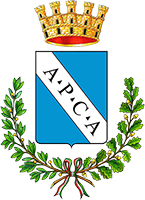
In ancient times, this castle-fort was known as the Castrum Fornoli: its name probably derives from the numerous ovens and furnaces that from Roman times were used to fire pottery and building materials such as bricks and tiles. At the start of the 15th century documents report that the walls and towers of Fornole were fortified by the town of Amelia, which regarded it as being a strategic stronghold for the protection of its own estates and for checking the expansion of Narni. In 1412, Braccio da Montone (Perugia 1368 – L’Aquila 1424), one of the greatest Italian condottieri (leaders of bands of mercenary soldiers), invaded Fornole several times, and the following year, Paolo Rosini, Captain of the Church Estate Army, badly destroy the town, which had joined Amelia in an act of loyalty to Ladislao, the King of Naples and enemy of the Pope. In 1434 Niccolò Piccinino occupied the castle and set fire to it.
In 1596 an agreement between the two towns was drown up. Some stretches of wall with towers still survive from the ancient castle, as well as two gates. The geometric division of the ancient fortress layout is still clearly visible within the walls, with straight and parallel alleyways. The parish church dedicated to St. Peter’s has undergone many changes over the centuries. However, on the vault of the nave, a valuable 17th century fresco is still visible, bearing the image of the Trinity. In the chapels, on either side of the transept, are also two canvases of a certain value depicting the Last Supper (right side) and Pope San Silvestro (left side). The sculptures carved in wood by local artist Anzio Barbaccia in 1985 are interesting too. They represent Saint Francis, Saint Anthony and the Pietà. A pleasant trip can also be started towards St. Sylvester’s Park to admire the little church dedicated to this saint, protector of the village. According to legend, St. Sylvester freed the city from a dragon’s spells, as it is representing in a painting inside the church itself.
Going on the Route 205, in direction of Amelia, you reach the Marian Sanctuary of St. Mary in Monticelli. A pair of very interesting art pieces have been preserved in its remodelled Baroque interior: Christ in Majesty with Saints of the Augustinian Order probably ascribable to Giacinto Gimignani (Pistoia 1606 – Roma 1681) and a fresco fragment transferred to canvas, repainted in 19th century style, depicting the Virgin in prayer. The original drawing has been correctly attributed by the local historian Emilio Lucci to Piermatteo d’Amelia (1445/48 – 1506 ca.). His presence is documented by archival sources, which cite him like possessor of cappellania del SS.mo Salvatore, istituita dalla famiglia Zuccanti nella chiesa rurale di S. Maria in Monticelli.
FORNOLE: SAN SILVESTRO
Within the municipality of Amelia and near its eastern boundary lies Mount San Silvestro, a modest hill that dominates the town from the north-east of the state road Amerina and the town of Fornole. The hill is characterized by the presence of a summit plateau, the edge of which is the church of San Silvestro, from which the mountain takes its name. The church building belongs to a very simple building type, a classroom single nave covered by a gabled roof and an apse facing east. The summit plateau of the mountain, easy to defend and ideal for the control of local roads and the surrounding territory, must have always exercised a strong attraction on men, who may have occupied this site since ancient times. During the early Middle Ages the hill seems to have played an important role in the defense of the so-called Byzantine corridor, hosting a military structure and guarding the road that connected the Via Amerina with the Via Flaminia against the Lombards, and which roughly corresponds to the current Strada Amerina. Some sculpture exhibits, dated to the first half of the ninth century AD and discovered thanks to an archaeological survey carried out in front of the church, show that the top of the mountain, at least from the age of Charlemagne, has hosted a religious building, probably built by a monastic community.
The name of the church also refers to the Carolingian, whereas in the second half of the eighth century and the first decades of the next one, a considerable spread of the cult of Pope Sylvester I was observed. Linked to the life of the saint is the legendary dragon tamed by this pontiff; the episode, which symbolizes the victory of Christianity over pagan resistance, is deeply rooted in local tradition, which still recognizes a small cave located near the church as the hideout of the beast. In the twelfth century, the church building was affected by a large construction project, during which the church featured the current apse and a quadrangular courtyard, brought to light by the archaeological digs and now no longer visible. Belonging to this period are some tombs discovered with the excavations near the courtroom of worship; their presence seems to testify the existence of a settlement on the mountain, that between the thirteenth and fourteenth centuries could have moved the site currently occupied by the historic center of Fornole, thus giving rise to this town. In the Charter of the City of Amelia, dated 1330, “castrum novum Fornolis” is in fact quoted, clearly referring to a settlement of recently build, definitely identified in the castle which now forms the oldest part of the town. It is in 1443 when the church of San Silvestro first appears in the written documentation, the latter appeared now incorporated in the jurisdiction of the parish of Castle Fornole, whose main office and jurisdiction at the time was the church of San Bartolomeo, situated outside the castrum, along the road leading to the village of Montecampano. Following the Apostolic Visitation in the Amerina Diocese conducted in 1574 by Bishop Pietro Camaiani, the church of San Silvestro was restored, thus assuming the current appearance.
The facade and the south wall were completely rebuilt redeploying the oldest materials, while inside, the classroom was equipped with the current altar and a new wall, which deprived the church of the semicircular apse space, whose structure today remains visible only from the outside. The new back wall of the building was decorated with three rectangular frescoes: the center pane is San Silvestro holding a chained dragon in hand, while on the left is a holy martyr evangelist and to the right a holy knight, in which you might recognize Saint George. The intervention of 1574 also involved a general arrangement of the front of the church, where the ancient churchyard was covered to be replaced by a structure of smaller dimensions, in which an old building of worship was reused. A detailed description of the church of San Silvestro is contained in the report of the pastoral visit conducted by Bishop Macioti in 1832, while in the documentation of the visit issued in 1941 by the Bishop of Amelia Vincenzo Lojali a restoration of the church was completed around 1920 is remembered. The complete renovation of the roof of the cult was completed in the seventies. Over the past decades the church of San Silvestro has undergone several restorations, which have ensured the preservation of this interesting religious building. Biography: G. FAUSTINI, La chiesa di San Silvestro presso Fornole. Storia di un sito dall’antichità ad oggi, Terni 2014.


